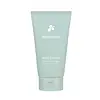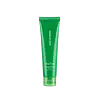What's inside
What's inside
 Key Ingredients
Key Ingredients

 Benefits
Benefits

 Concerns
Concerns

No concerns
 Ingredients Side-by-side
Ingredients Side-by-side

Water
Skin ConditioningGlycerin
HumectantButyrospermum Parkii Butter
Skin ConditioningIsopentyldiol
HumectantCetearyl Alcohol
EmollientOctyldodecanol
EmollientCaprylic/Capric Triglyceride
MaskingDicaprylyl Carbonate
EmollientPolyglyceryl-3 Methylglucose Distearate
EmulsifyingCetearyl Olivate
C12-16 Alcohols
Emollient1,2-Hexanediol
Skin ConditioningSorbitan Olivate
EmulsifyingEctoin 1%
Skin ConditioningMacadamia Ternifolia Seed Oil
EmollientMethyl Trimethicone
Skin ConditioningHydrogenated Lecithin
EmulsifyingPalmitic Acid
EmollientAmmonium Acryloyldimethyltaurate/Vp Copolymer
Ethylhexylglycerin
Skin ConditioningMicrocrystalline Cellulose
AbsorbentVinyl Dimethicone/Methicone Silsesquioxane Crosspolymer
Disodium EDTA
Xanthan Gum
EmulsifyingDimethicone/Vinyl Dimethicone Crosspolymer
Skin ConditioningCellulose Gum
Emulsion StabilisingCeramide NP
Skin ConditioningDipropylene Glycol
HumectantOlea Europaea Fruit Oil
MaskingSqualane
EmollientGlyceryl Stearate
EmollientCholesterol
EmollientCeramide As
Skin ConditioningCeramide AP
Skin ConditioningCeramide Ns
Skin ConditioningPhytosphingosine
Skin ConditioningCeramide EOP
Skin ConditioningWater, Glycerin, Butyrospermum Parkii Butter, Isopentyldiol, Cetearyl Alcohol, Octyldodecanol, Caprylic/Capric Triglyceride, Dicaprylyl Carbonate, Polyglyceryl-3 Methylglucose Distearate, Cetearyl Olivate, C12-16 Alcohols, 1,2-Hexanediol, Sorbitan Olivate, Ectoin 1%, Macadamia Ternifolia Seed Oil, Methyl Trimethicone, Hydrogenated Lecithin, Palmitic Acid, Ammonium Acryloyldimethyltaurate/Vp Copolymer, Ethylhexylglycerin, Microcrystalline Cellulose, Vinyl Dimethicone/Methicone Silsesquioxane Crosspolymer, Disodium EDTA, Xanthan Gum, Dimethicone/Vinyl Dimethicone Crosspolymer, Cellulose Gum, Ceramide NP, Dipropylene Glycol, Olea Europaea Fruit Oil, Squalane, Glyceryl Stearate, Cholesterol, Ceramide As, Ceramide AP, Ceramide Ns, Phytosphingosine, Ceramide EOP
Water
Skin ConditioningGlycerin
HumectantButylene Glycol
HumectantDipropylene Glycol
Humectant1,2-Hexanediol
Skin ConditioningTrehalose
HumectantHydrogenated Polydecene
EmollientDiglycerin
HumectantAcrylates/C10-30 Alkyl Acrylate Crosspolymer
Emulsion StabilisingAmmonium Acryloyldimethyltaurate/Vp Copolymer
Tromethamine
BufferingDipotassium Glycyrrhizate
HumectantXanthan Gum
EmulsifyingEthylhexylglycerin
Skin ConditioningPhormium Tenax Leaf Water
AntioxidantGlyceryl Acrylate/Acrylic Acid Copolymer
HumectantDisodium EDTA
Propanediol
SolventSecale Cereale Seed Extract
AbrasiveTriticum Vulgare Germ Extract
Skin ConditioningCentella Asiatica Extract
CleansingPolyglutamic Acid
Skin ConditioningWater, Glycerin, Butylene Glycol, Dipropylene Glycol, 1,2-Hexanediol, Trehalose, Hydrogenated Polydecene, Diglycerin, Acrylates/C10-30 Alkyl Acrylate Crosspolymer, Ammonium Acryloyldimethyltaurate/Vp Copolymer, Tromethamine, Dipotassium Glycyrrhizate, Xanthan Gum, Ethylhexylglycerin, Phormium Tenax Leaf Water, Glyceryl Acrylate/Acrylic Acid Copolymer, Disodium EDTA, Propanediol, Secale Cereale Seed Extract, Triticum Vulgare Germ Extract, Centella Asiatica Extract, Polyglutamic Acid
 Reviews
Reviews

Ingredients Explained
These ingredients are found in both products.
Ingredients higher up in an ingredient list are typically present in a larger amount.
1,2-Hexanediol is a synthetic liquid and another multi-functional powerhouse.
It is a:
- Humectant, drawing moisture into the skin
- Emollient, helping to soften skin
- Solvent, dispersing and stabilizing formulas
- Preservative booster, enhancing the antimicrobial activity of other preservatives
Ammonium Acryloyldimethyltaurate/Vp Copolymer (let's call it AAVC for short) is a synthetically created polymer. It's used as a film-forming agent and used to thicken the consistency of products.
AAVC is able to increase the consistency and viscosity of products due to its large molecule size. It also prevents ingredients from separating.
Dipropylene Glycol is a synthetically created humectant, stabilizer, and solvent.
This ingredient helps:
Dipropylene glycol is technically an alcohol, but it belongs to the glycol family (often considered part of the ‘good’ alcohols). This means it is hydrating and gentle on skin unlike drying solvent alcohols like denatured alcohol.
As a masking agent, Dipropylene Glycol can be used to cover the smell of other ingredients. However, it does not have a scent.
Studies show Dipropylene Glycol is considered safe to use in skincare.
Learn more about Dipropylene GlycolDisodium EDTA plays a role in making products more stable by aiding other preservatives.
It is a chelating agent, meaning it neutralizes metal ions that may be found in a product.
Disodium EDTA is a salt of edetic acid and is found to be safe in cosmetic ingredients.
Learn more about Disodium EDTAEthylhexylglycerin (we can't pronounce this either) is commonly used as a preservative and skin softener. It is derived from glyceryl.
You might see Ethylhexylglycerin often paired with other preservatives such as phenoxyethanol. Ethylhexylglycerin has been found to increase the effectiveness of these other preservatives.
Glycerin is already naturally found in your skin. It helps moisturize and protect your skin.
A study from 2016 found glycerin to be more effective as a humectant than AHAs and hyaluronic acid.
As a humectant, it helps the skin stay hydrated by pulling moisture to your skin. The low molecular weight of glycerin allows it to pull moisture into the deeper layers of your skin.
Hydrated skin improves your skin barrier; Your skin barrier helps protect against irritants and bacteria.
Glycerin has also been found to have antimicrobial and antiviral properties. Due to these properties, glycerin is often used in wound and burn treatments.
In cosmetics, glycerin is usually derived from plants such as soybean or palm. However, it can also be sourced from animals, such as tallow or animal fat.
This ingredient is organic, colorless, odorless, and non-toxic.
Glycerin is the name for this ingredient in American English. British English uses Glycerol/Glycerine.
Learn more about GlycerinWater. It's the most common cosmetic ingredient of all. You'll usually see it at the top of ingredient lists, meaning that it makes up the largest part of the product.
So why is it so popular? Water most often acts as a solvent - this means that it helps dissolve other ingredients into the formulation.
You'll also recognize water as that liquid we all need to stay alive. If you see this, drink a glass of water. Stay hydrated!
Learn more about WaterXanthan gum is used as a stabilizer and thickener within cosmetic products. It helps give products a sticky, thick feeling - preventing them from being too runny.
On the technical side of things, xanthan gum is a polysaccharide - a combination consisting of multiple sugar molecules bonded together.
Xanthan gum is a pretty common and great ingredient. It is a natural, non-toxic, non-irritating ingredient that is also commonly used in food products.
Learn more about Xanthan Gum